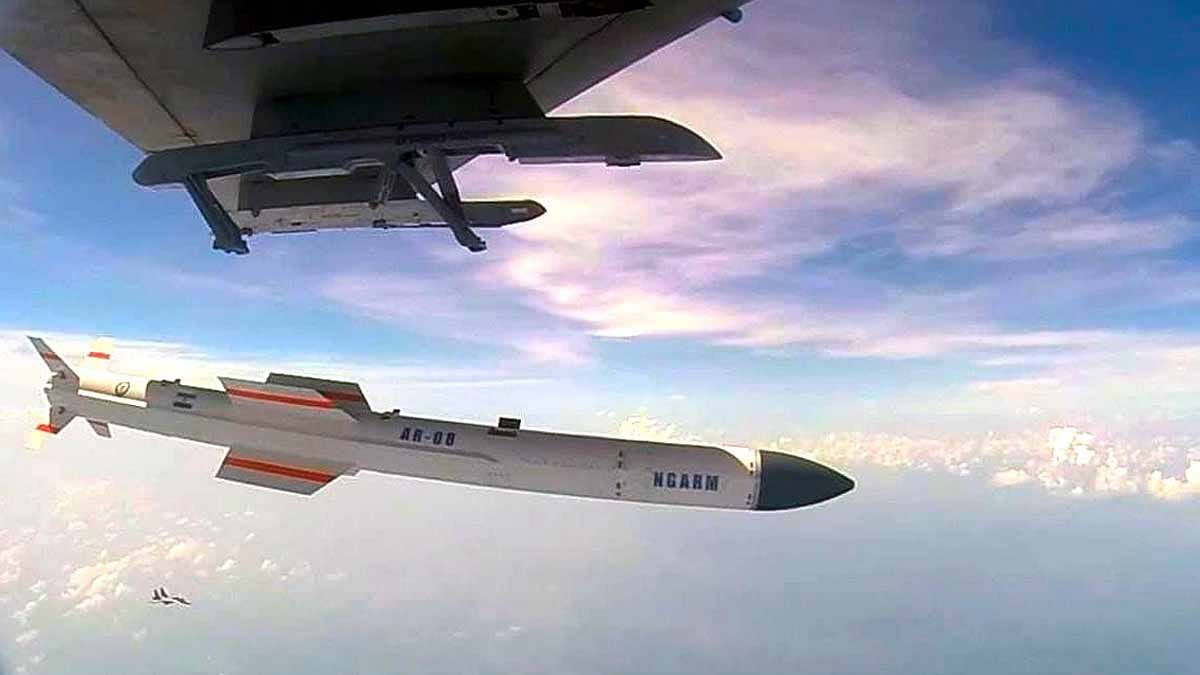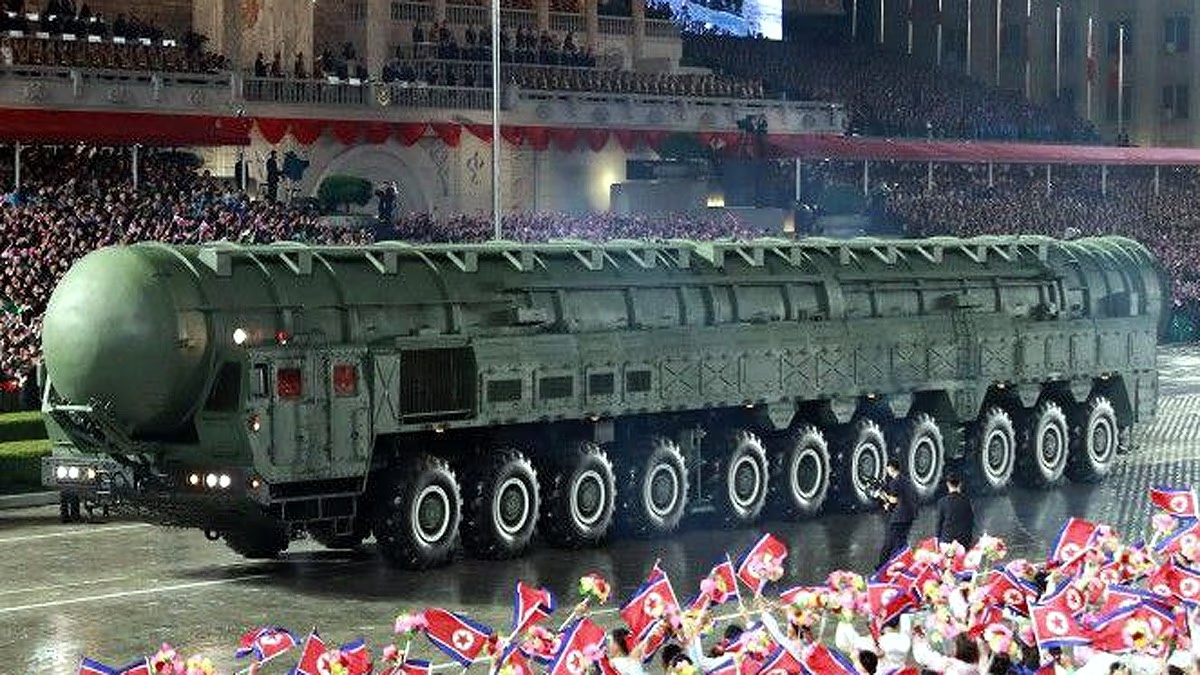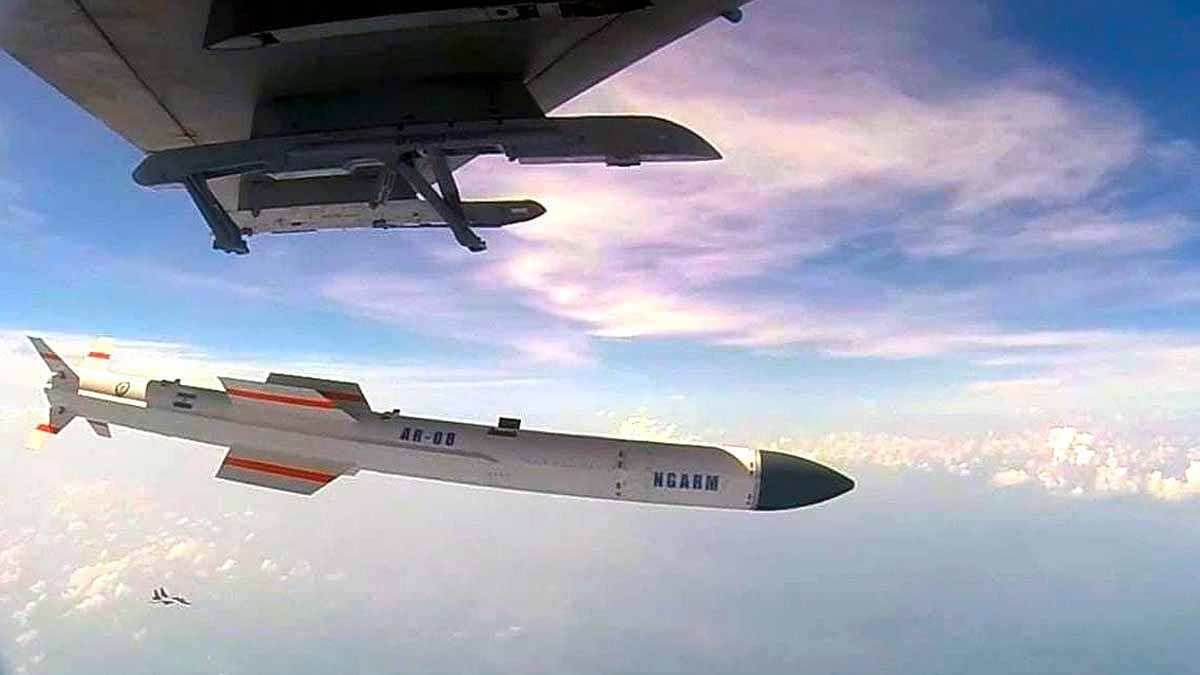Pakistan is continuously acquiring new missiles like the AIM-120 AMRAAM and the Chinese PL-15. Yet, India's missile technology is leagues ahead. DRDO's VSHORAD, Astra, Rudram, NRSAM, and BrahMos-ER excel in range, speed, and precision outperforming Pakistan.
During the Sindhur operation in May 2025, India easily outmaneuvered Pakistani missiles. Let's delve into the full specifications and comparisons. These missiles render India's air, naval, and ground power unbeatable.
VSHORAD (Very Short Range Air Defense) is India’s man-portable missile, capable of shooting down drones, helicopters, and low-flying aircraft. It is perfect for thwarting Pakistan’s small drone or helicopter attacks.
Range: 6 kilometers
Speed: 2470 km/hr
Weight: 17 kilograms
Guidance: Infrared imager (heat-seeking)
Platform: Shoulder launch, truck or helicopter
Superior to Pakistan’s Anza missile (4 km range). VSHORAD was inducted into the army in 2025 and is ready for border deployment.
Astra, India's indigenous BVRAM (Beyond Visual Range Air-to-Air Missile), is in service with Mk-1 and Mk-2 being tested in 2025. Capable of striking Pakistan's JF-17 jets from 200 km away.
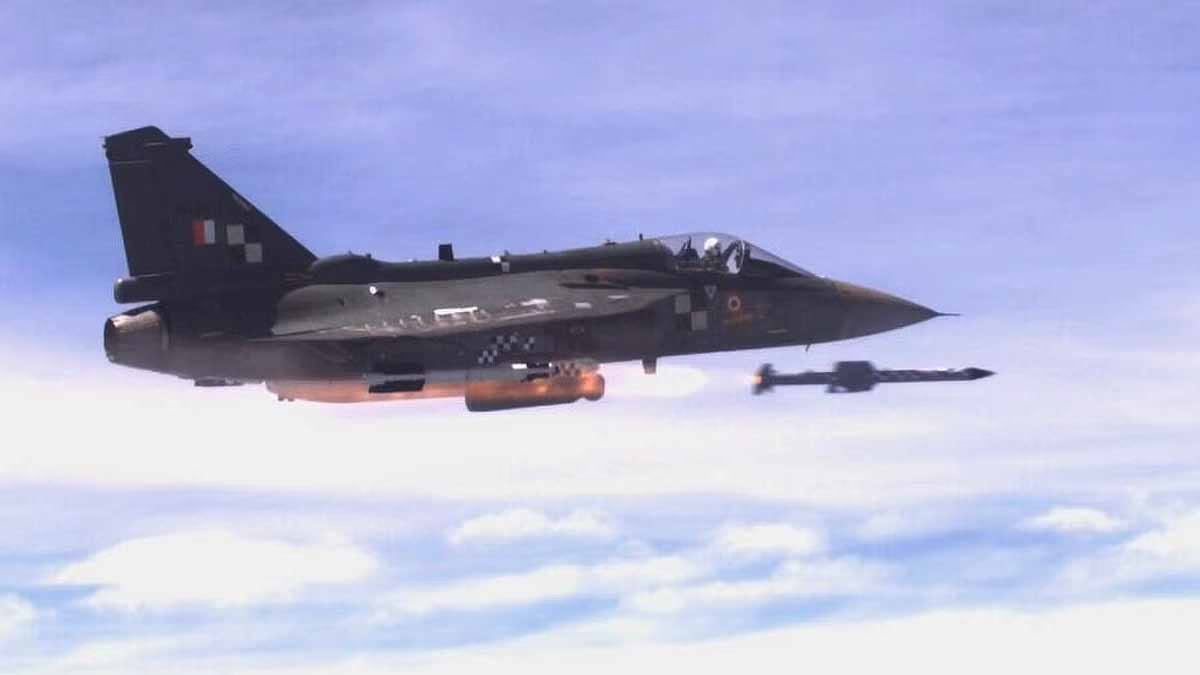
Source: aajtak
Range: Mk-1: 110 km; Mk-2: 200 km
Speed: 4939 km/hr
Weight: 154 kilograms
Guidance: Active radar + GPS (self-lock target)
Platform: Sukhoi-30, Tejas, MiG-29
In comparison to Pakistan's PL-15 (200 km), Astra shines with better precision and lower cost (10 million dollars). Successfully tested 200 Mk-2 by 2025.
Rudram is an air-to-surface missile designed to destroy enemy radars, airports, or bunkers. Rudram-1 is in service, while Rudram-3 aims to go hypersonic by 2025. It is lethal for targeting Pakistani airbases.
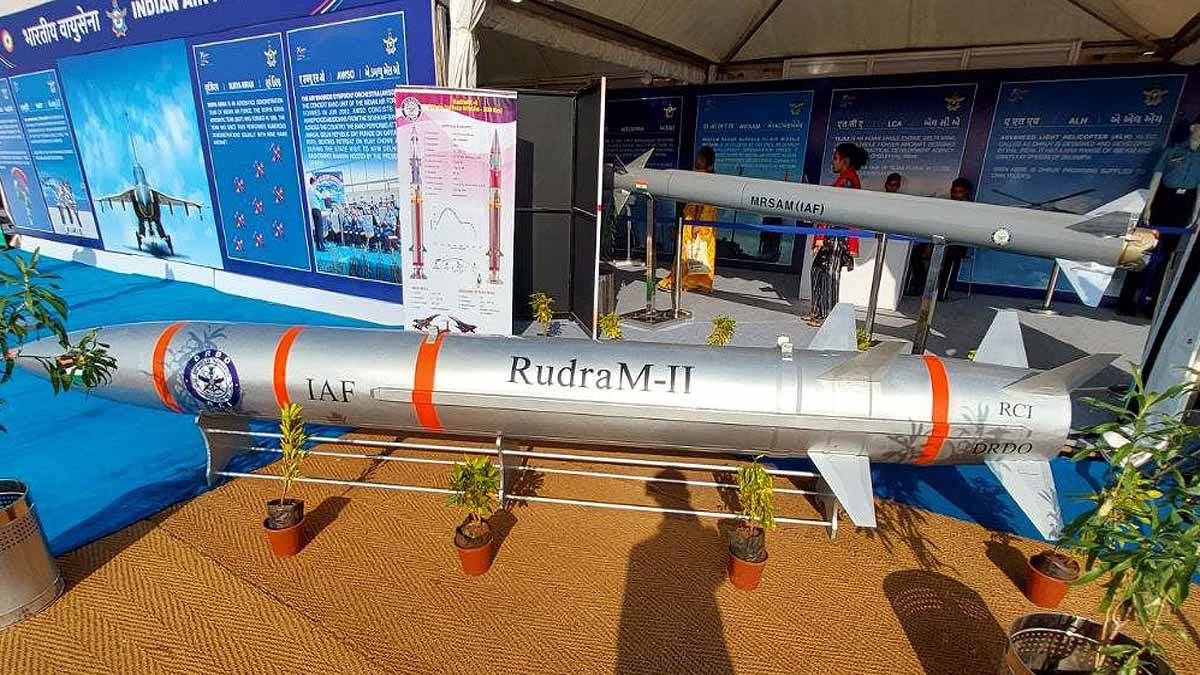
Source: aajtak
Range: 150-250 km
Speed: 2470 km/hr
Weight: 700 kilograms
Guidance: Passive radar + GPS (tracks radar signals)
Platform: Sukhoi-30, Tejas
Though Pakistan's Ra’ad has a longer range (350 km), Rudram excels with penetration warheads for hard targets. Rudram-3 to be tested at 7408 km/hr by 2025.
NRSAM (Naval Short Range Surface-to-Air Missile) defends naval ships against threats like Harpoon missiles. Critical for enclosing Pakistan’s navies at sea.
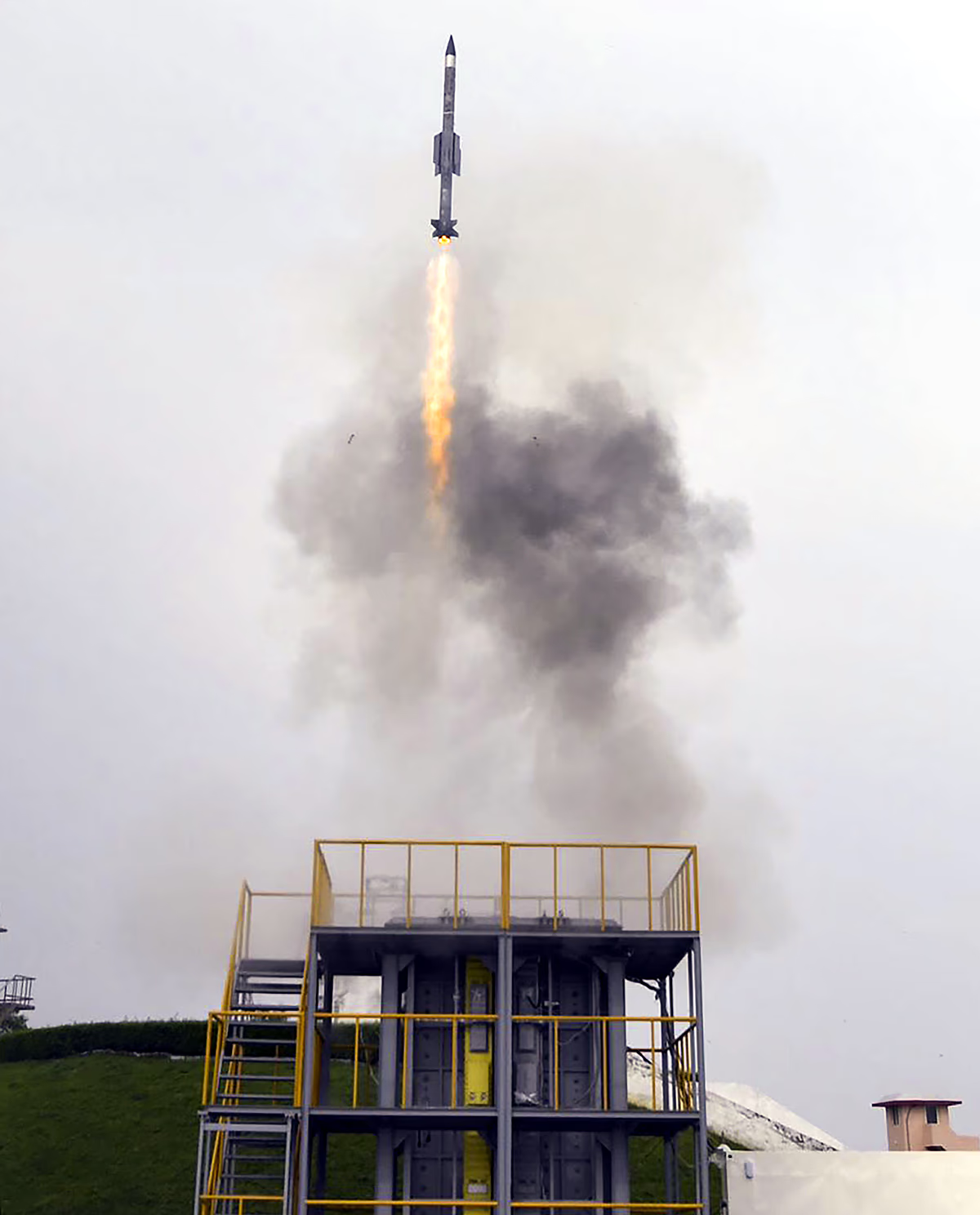
Source: aajtak
Range: 15-25 km
Speed: 3087 km/hr
Weight: 250 kilograms
Guidance: Active radar
Platform: Ship, submarine
While Pakistan’s LY-80 outdistances it (40 km), NRSAM outperforms in quick reaction and precision. Part of the navy by 2025.
BrahMos-ER (Extended Range), a joint venture between India and Russia, deploys from land, air, and sea. It can strike Pakistani ships or bases from 800 km away.
Range: 800 km
Speed: 3704 km/hr
Weight: 2,500 kilograms
Guidance: INS + GPS + active radar
Platform: Ship, jet, submarine, land
Longer range and faster than Pakistan’s Babur (700 km). By 2025, orders for 220 ER versions were made with the hypersonic BrahMos-II (9878 km/hr, 1,500 km) forthcoming.
Pakistan’s PL-15 matches Astra Mk-2 in range (200 km), yet India stands out in numbers and integration. Ra’ad, though longer in range (350 km) than Rudram, can’t match Rudram’s precision. Babur is smaller than BrahMos-ER. Overall, India’s missiles lead in range (800 km+), speed (5000 km/hr), and indigenous technology. By 2025, India's missile arsenal is twice as strong as Pakistan's.
